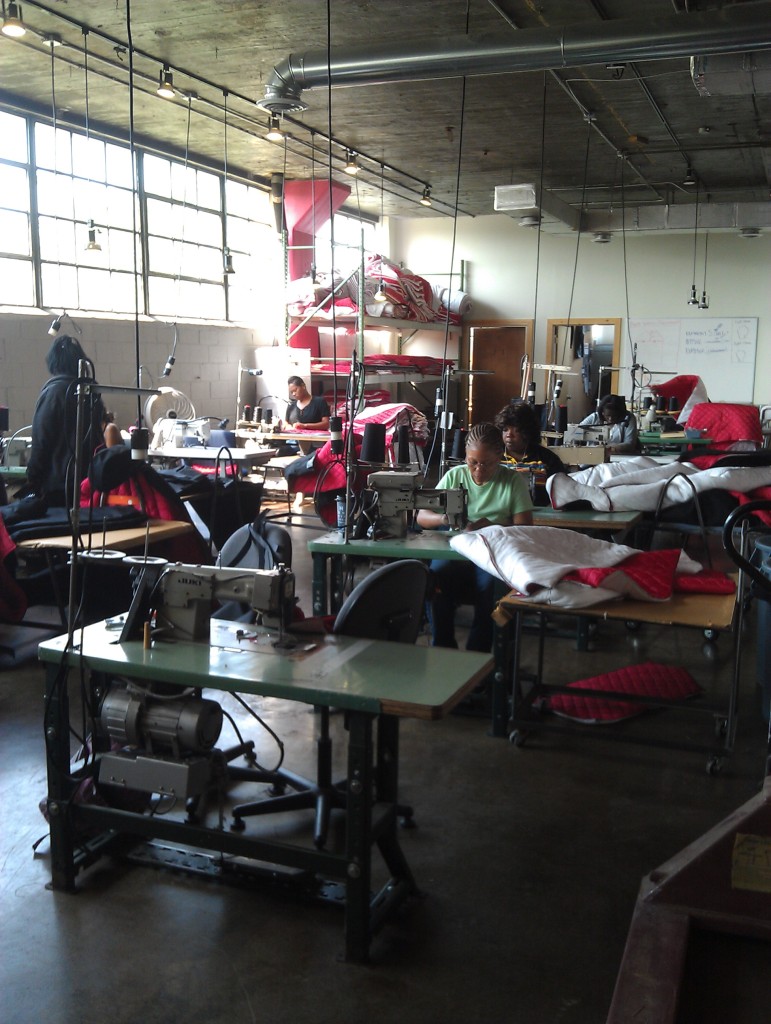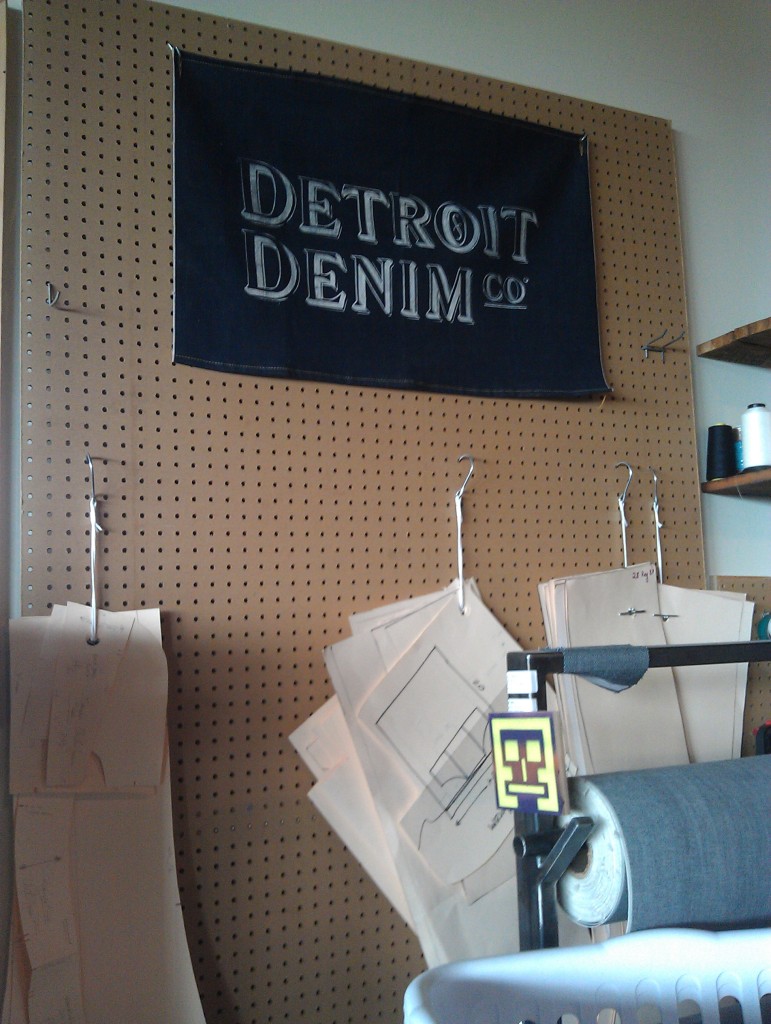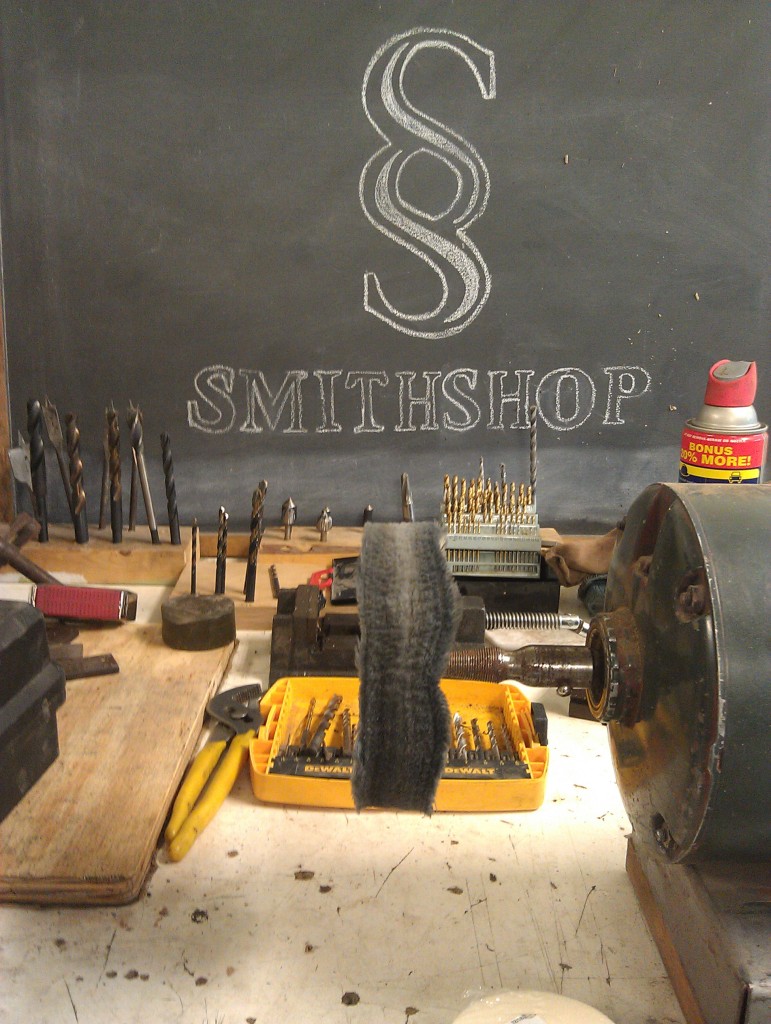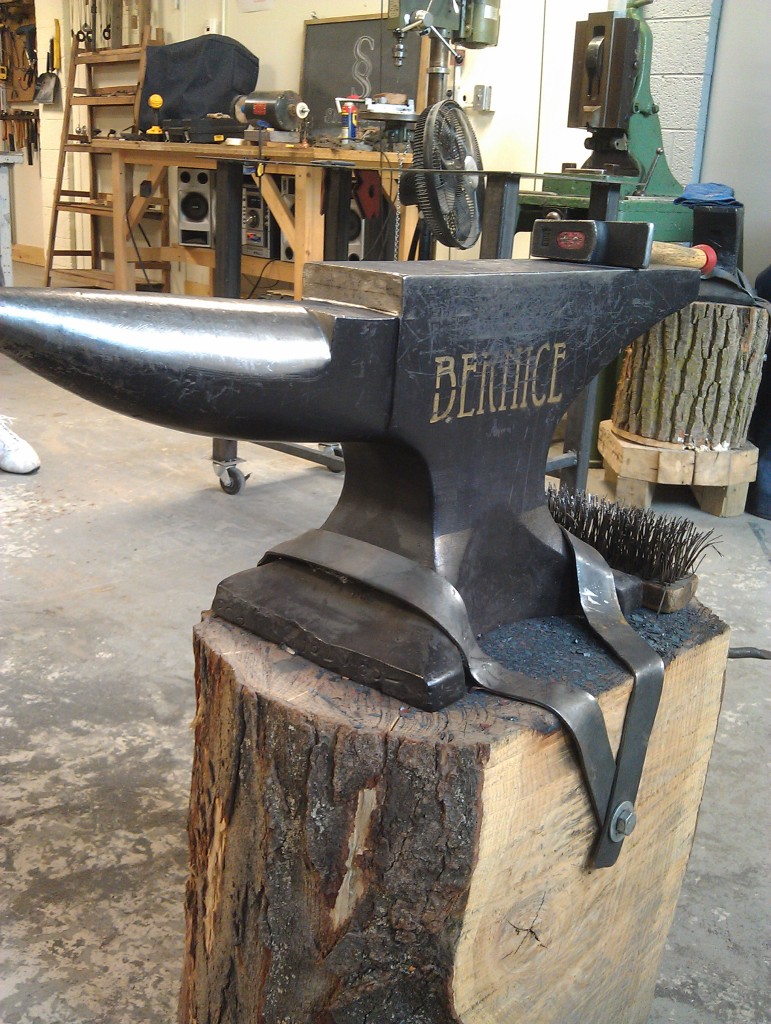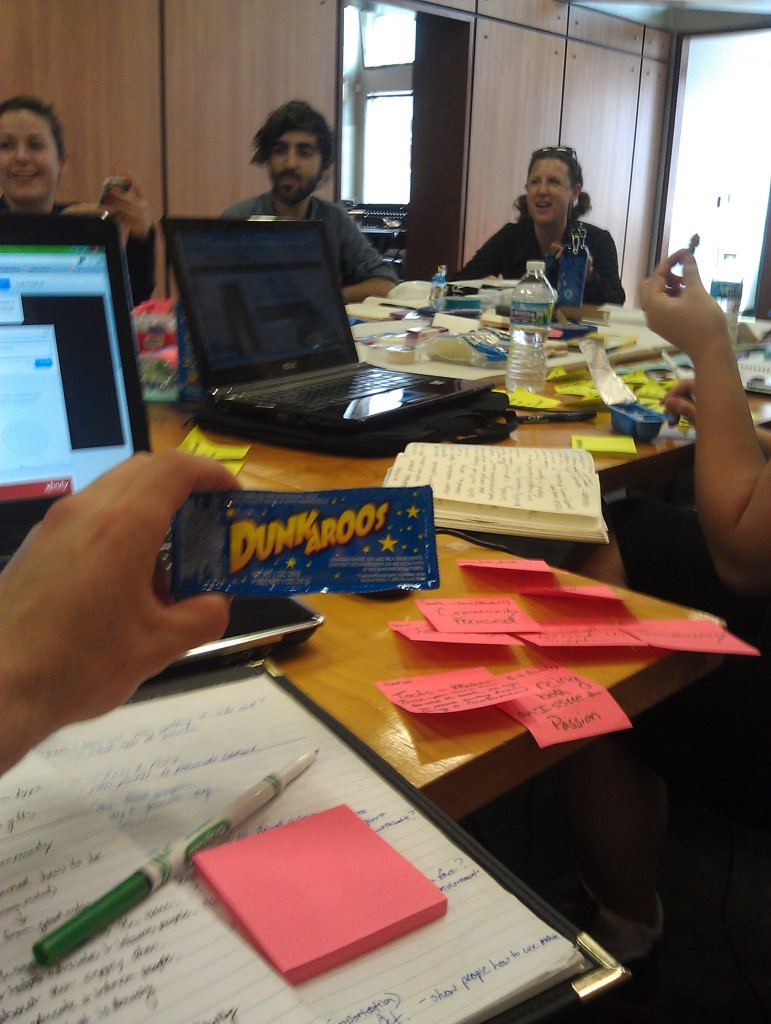Day 3 (6/21) Reflection:
On the third day, we went out into the field and were able to meet some Detroit makers. We headed off to the Ponyride building in Corktown, which is filled with makers. The space is an old warehouse re-purposed to house “socially-conscious artists and entrepreneurs to work and share knowledge, resources and networks.” The group was broken up into two groups. One group interviewed two people, Veronika from The Empowerment Plan and Paul from the Hunt and Noyer Woodworks.
My group interviewed Eric from Detroit Denim, and Gabriel from Smith Shop. Detroit Denim is a handmade jean and accessory company. They are a simple but exciting group. There are three employees, or at least we met three, and they take their craft very seriously (as all makers I have met do). Although they are in the fashion business, they keep their fashion line simple. They offer two pairs of jeans. One regular slim cut and one “hockey cut” but with a straight leg (No female jeans yet, but coming soon). The hockey cut offers a little extra thigh room for the more athletic build (I loved this as a hockey player and a current jean fanatic who finds it difficult to get proper fitting jean). In addition to their two cuts, they offer some tote bags, t-shirts, and leather goods, like belts, bracelets, etc. His jeans are made from high quality raw selvage denim, produced in North Carolina, with the belt buttons made from Cooper in Connecticut. Now, I’m not going to lie, but these jeans look and seem awesome! The problem, they cost $250. Yes, they are a lot, but at the same time they are meant to last a very long time, and so over time (let say 5 years) they will eventually return your investment. I say this because if you go to the mall right now, and buy a $50 pair of jeans (men’s I am talking about), you will probably have to get a new pair within two years. So if you add that up it comes to about $150-200 in 5 years.
Here are some key insights we gathered from our interview:
- He was unsure of the market, made some jeans to see what his market was like, and found that there was a market (question we have now, is how can you afford to do that? I mean it seemed he had some money saved in order to test the market, but not everyone has that luxury)
- Does a lot of sale at Ponyride, and collaborates with other stores to offer his gear (Shinola Store and Mercantile Company to name a few)
- He chose NC and CT as his material sources, because that is all that is left in America
- He offers a repair service for ANY jeans, but not necessarily to make money. When they repair jeans that are not Detroit Denim, they see where the blowouts occurred and use that data to strengthen and improve their own jeans. (This is a great market research strategy)
- Detroit Denim Jeans are meant to get better with age
- Detroit Denim doesn’t want to make many cuts, wants to stay simple
- Biggest issue: Making enough stuff—just cannot keep up with demand, but people understand this it seems, because the product is of the highest quality
- What sticks with Eric: when people give Detroit Denim products out as gifts to others, then he knows he made a good enough product that others are willing to give to others
The Smith Shop was also a cool place, but our conversation focused most on the sourcing of materials. Gabriel is a very passionate guy, and loves his metal work, but he also is a huge advocate for proper sourcing of metals (precious and non-precious). He wants refineries and metal producers to become more transparent about their supply chain. Although he wants this to happen, there was a clear struggle between his time as an advocate and as a maker.
Here were some notes:
- Smith Shop is invested to build their studio around the community, offering classes and being able to get support and ideas through community input and interaction
- Once you understand how to use tools, you can move away from being a consumer and begin to be a maker
- He uses an additive method to make his metal works, rather than the more metal practice of removing parts to make what you want (removal is way more wasteful)
- Ethical material sourcing is difficult to do, and they do their best to sources from good refineries
- Transparency is key to this process as well as makers overall process
- Lack of knowing or caring is the biggest issue for companies and their supply chain
- At the same time, it is difficult to get people to think about their supply chain, let alone re-think about their supply chain
- Try to advocate and inform people any way possible
- Advocacy is not his #1 priority but wants it to be
- #1 thing is why to make something by hand
- Story is so important = intimacy with craft
- Finds a lot of collaboration between Ponyride businesses
- He is interested to find out what handmade stuff in Detroit really means
Finally after lunch we headed back to Shinola’s Office where they make bikes and watches. Half of the group talked with their bike assembly people and the other half toured the watch assembly and talked with some of the employees.
My opinion of Shinola quick and dirty: When I think of Makers, I think of people in lofts, old warehouses, and/or any space that can be used to make something. Cleanliness, size, and location tend to be less of an issue, as long as the equipment can be stored and you can make something. Shinola is the pinnacle of Makers in the sense that they have what seems like unlimited resources. Now, I don’t want to give the impression Shinola is a fake maker or anything, but they just have different requirements.
For the watches specifically, there can be NO dust in any of the assembly or an entire watch can be messed up. Because of this they have a vacuum sealed room where air is pushed out instead of pumped in. You also have to “scrub up” so you don’t track dust in, and you can’t bring much inside besides a pad of paper and your belongings in your pocket. The room was squeaky clean, but it was really cool to watch them assemble the watches.
Notes from our interview:
- All materials were imported from outside the us, but completely assembled in Detroit
- All materials are just not made in the US, the watch movements are made in Switzerland and other parts in Asia
- Everyone in the facility is trained on every assembly position
- The idea is to have everyone be able to make a watch no matter what they work on, on a daily basis
- This makes a better educated workforce, who can fill in gaps on days people are out, and also makes them more valuable to the company
- Built in Detroit Cache can’t be found anywhere else
- Long term goal—foster Detroit as the watch making capital of the US
- Problem: Can’t keep up with demand, similar to Denim
- Shinola’s brand story and value proposition is “ Hand Made”
- They are trying to break the myth that handmade can be done at a large scale for good prices in the US
- The watch hopes to represent generations
- Pass the watch down from time to time—“better with age” concept
- Supply chain= challenge
- There are some issues with this, like when a defective part is found, it slows the whole assembly process
- In addition, there is no American manufactures who are set up for this type of manufacturing anymore and they are not willing to re-tool right now
- They are never going to send a product to someone who has something that could be defective—they have a very high quality standard
- Very transparent about this as well
After observing and interviewing the different groups we headed back to the studio to dump all of our info and begin thinking about what this all means. Oh yeah, can’t knock the Dunkaroos (throwback).

